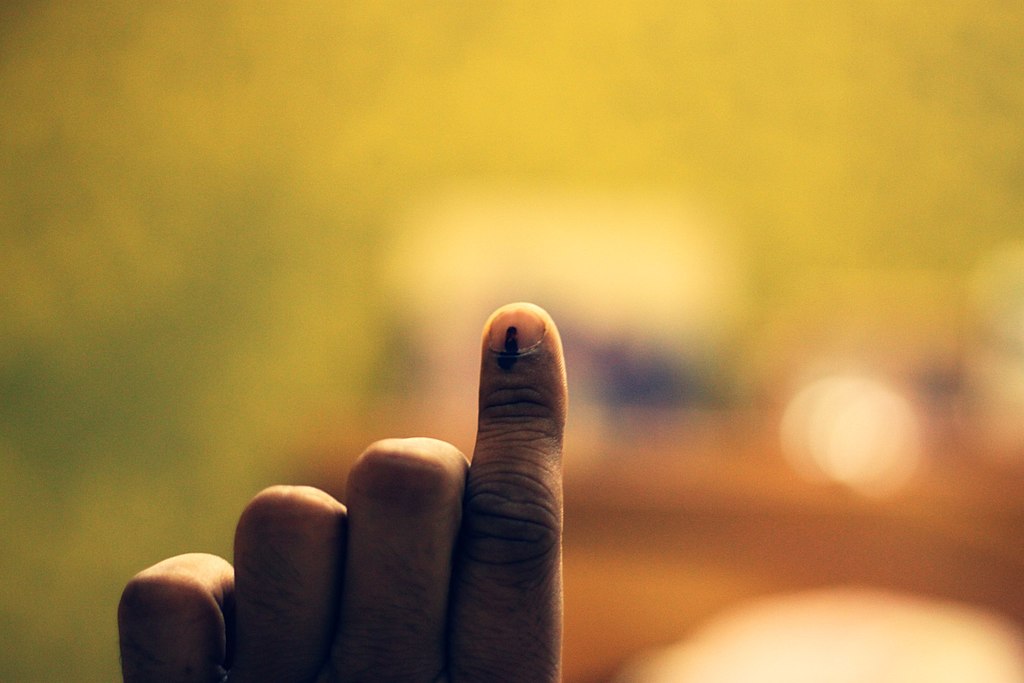The last delimitation of Lok Sabha constituencies in Bengaluru happened in 2008. Before that, areas of Bengaluru were part of three constituencies – Bangalore North, Bangalore South and Kanakapura. After the delimitation the three constituencies were delimited into Bangalore North, Bangalore South, Bangalore Central and Bangalore Rural (with most areas of the erstwhile Kanakapura constituency delimited into it).




With the dense population of Bengaluru Urban district where around 20% of the population of Karnataka is estimated to live, the number of voters is also expected to be high. For the 2024 general election, there are 5.38 Crore voters in Karnataka. The 28 assembly constituencies in Bengaluru Urban district contribute 98.43 Lakh voters or 18.3% of the total voters. This means that close to 1 in 5 voters in Karnataka live in Bengaluru Urban while only 1 in 7 constituencies of Karnataka are in Bengaluru.
| Constituency Name | Voters (in lakhs) |
| Bangalore North | 31.3 |
| Bangalore Rural | 27.26 |
| Bangalore Central | 23.59 |
| Bangalore South | 22.88 |

Of the 27.26 lakh voters in Bangalore Rural, 16.19 lakh voters are from the three Bengaluru assembly constituencies – Rajarajeshwarinagar, Bangalore South and Anekal. With such large numbers and difference in numbers a vote in Bangalore North has less value than a vote in Bangalore South.
There has also been a lot of growth in the number of voters since the last elections in 2019 in these constituencies.
| Constituency Name | Voters in 2024 (Lakh) | Voters in 2019 (Lakh) | Growth (%) |
| Bangalore North | 31.3 | 28.49 | 9.86 |
| Bangalore Rural | 27.26 | 24.97 | 9.17 |
| Bangalore Central | 23.59 | 22.04 | 7.03 |
| Bangalore South | 22.88 | 22.15 | 3.30 |
Most of the growth in the last five years has been in Bangalore North and Bangalore Rural followed by Bangalore Central. In terms of assembly constituencies, outer areas in Yeshwanthpura in Bangalore North, Bangalore South assembly constituency in Bangalore Rural, and Mahadevapura in Bangalore Central have been driving the growth.


Comparison with Chennai
In Chennai, the scenario looks different. The much larger Chennai South has 20.5 Lakh voters, less than even Bangalore South, while Chennai Central and South have 13-15 lakh voters. Comparing Bangalore’s constituencies, the number of voters electing one MP in Bangalore North is 31 lakh as against just 13.5 in Chennai Central and 15 Lakhs in Chennai North. The value of a vote in Bangalore North is thus less than half of the other two constituencies in Chennai.
However, looking at Bangalore where growth is in the outskirts, the surroundings of Chennai need to be considered too. There are more voters in Sriperambudur, Tiruvallur and Kancheepuram, and their growth since 2019 is also more comparable to Bengaluru.
| Constituency Name | Voters in 2024 (in lakhs) | Voters in 2019 (lakhs) | Growth (%) |
| Chennai North | 14.96 | 14.87 | 0.61 |
| Chennai Central | 13.5 | 13.32 | 1.35 |
| Chennai South | 20.2 | 19.73 | 2.38 |
| Tiruvallur | 20.85 | 19.47 | 7.09 |
| Sriperumbudur | 23.82 | 22.53 | 5.73 |
| Kancheepuram | 17.48 | 16.44 | 6.33 |

The outer parts of Chennai and Bangalore have been growing, at the cost of other areas, while the number and delimitation of constituencies has remained the same. Even then, the delimitation has ensured that there is no large skew in numbers in Chennai and the constituents are more evenly distributed than in Bangalore.
The current delimitation of constituencies, at both assembly and parliament level, in Bengaluru Urban needs an urgent re-look given the massive changes over the last decade. Otherwise the value of a vote will continue to vary widely depending on which part of the city the voter lives in.

